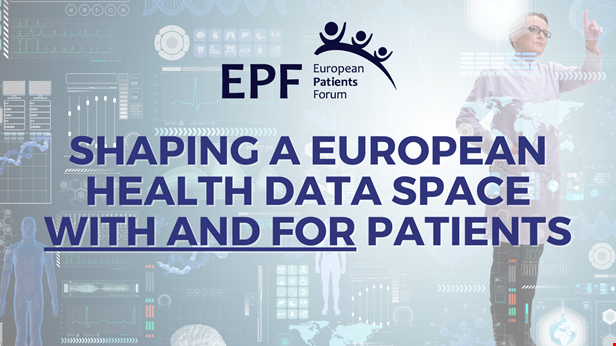Shaping a European Health Data Space with and for patients

The European Health Data Space (EHDS) has the potential to better harmonise and clarify the health data panorama in Europe, while also having a positive impact on digital health in more general terms. If shaped and implemented correctly, the EHDS can become a crucial pillar of the ‘European Health Union’, and ultimately improve the lives of citizens and patients.
Moreover, its broad scope makes prioritisation and planning efforts a necessity to ensure that all elements of the EHDS will be preserved on a series of essential principles based on citizens and patients’ needs.
Following consultation with our membership and the EPF Digital Health Working group, we have identified seven (7) crucial areas and actions that the the EHDS must address in our response to the European Commission’s public consultation. To summarise our views, the EHDS must:
- Be shaped to ensure barrier-free access and control of health data in an easy and transparent way, with the highest possible level of data protection and based on consent;
- Ensure patient safety at all levels;
- Deliver harmonisation while keeping in mind the differences between different health systems;
- Take into consideration and tackle current and potential inequalities and gaps in health literacy and access to digital;
- Tackle the ethical and practical challenges linked to current and future digital health transformation;
- Foster a digital transformation of healthcare that delivers added value for patients and responds to their true needs and concerns;
- Concretely and meaningfully involve patients in its shaping, governance, and implementation.
Without building on these elements, the EHDS might not be able deliver on its promises independently of the choice on specific options, tools, platforms, or guidelines. On the contrary, it might further exacerbate existing inequalities within Europe, potentially increase mistrust and, ultimately, not be accepted by the very individuals that should be at the centre of this initiative.
For the European Health Data Space to work, it will have to become more than a large-scale flagship European project. It must reach patients and citizens, be shaped with them, be accepted by them, respond to their needs, and ultimately ensure that health data and the digital transformation of healthcare will help deliver better care and increase quality of life.
To know more about EPF’s current views on the EHDS, covering health data, digital health services and Artificial Intelligence, have a look at the files below.
